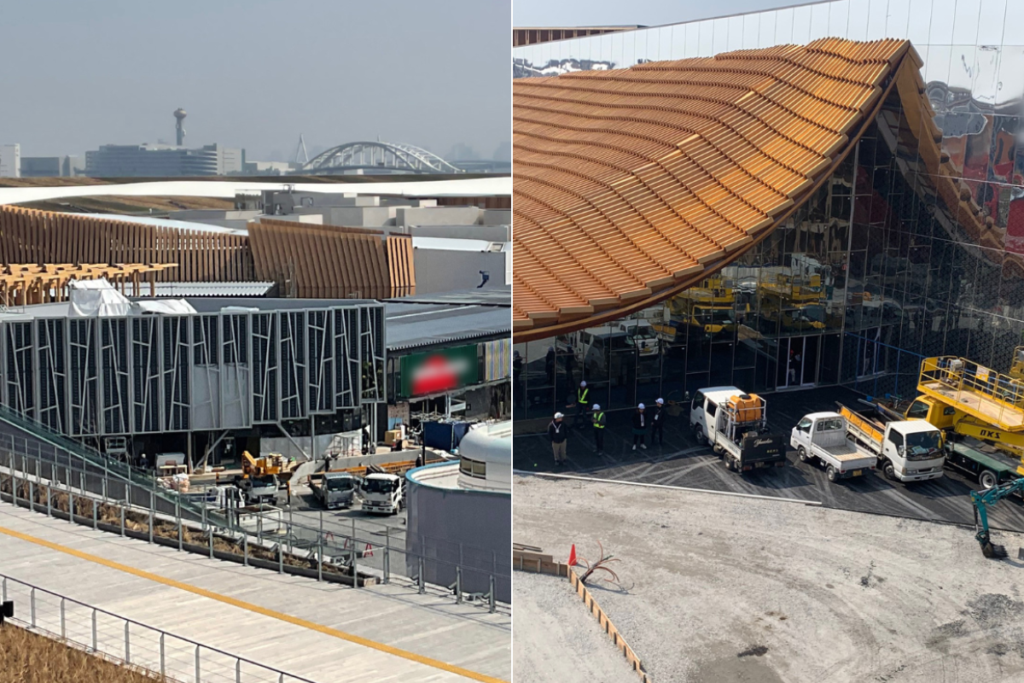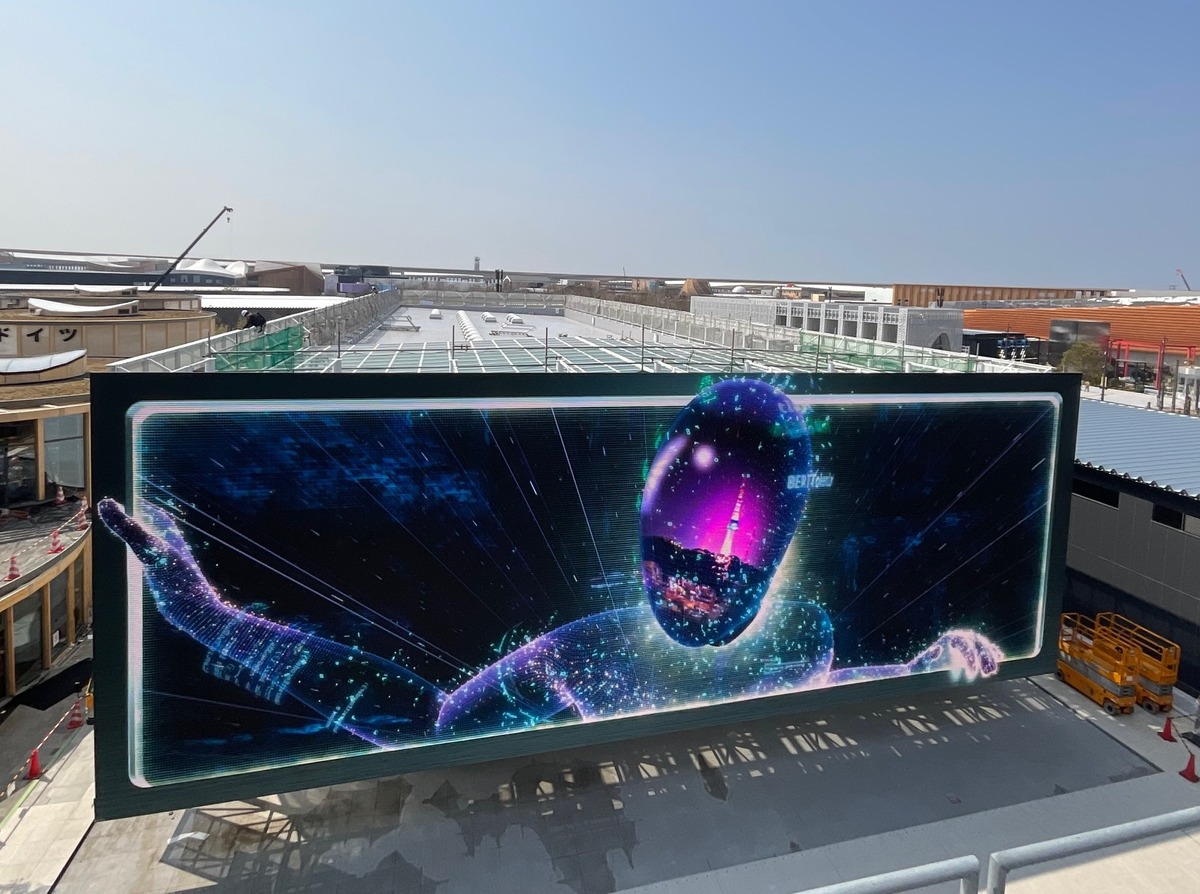Behind the Scenes at Osaka Expo
Despite fears about sinking infrastructure, contaminated water, rising costs, safety and security, missed deadlines, environmental damage, waning public support, absent nations and a cloak of secrecy inside the venue, I saw mostly positive signs during an exclusive preview of Expo 2025 Osaka, Kansai, Japan organised for three journalists at The Foreign Correspondents’ Club of Japan to the controversial 155-hectare (383 acres) venue, on March 20. We also checked out two hotels that couldn’t be more different, including the city’s tallest, newest and most exclusive.
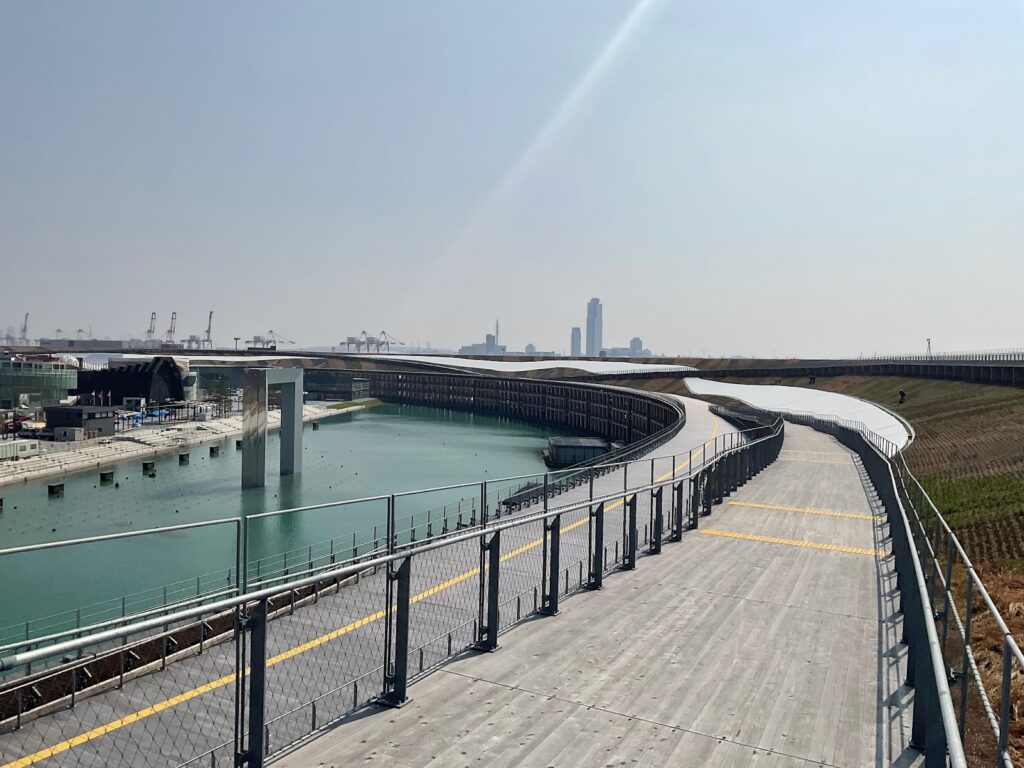
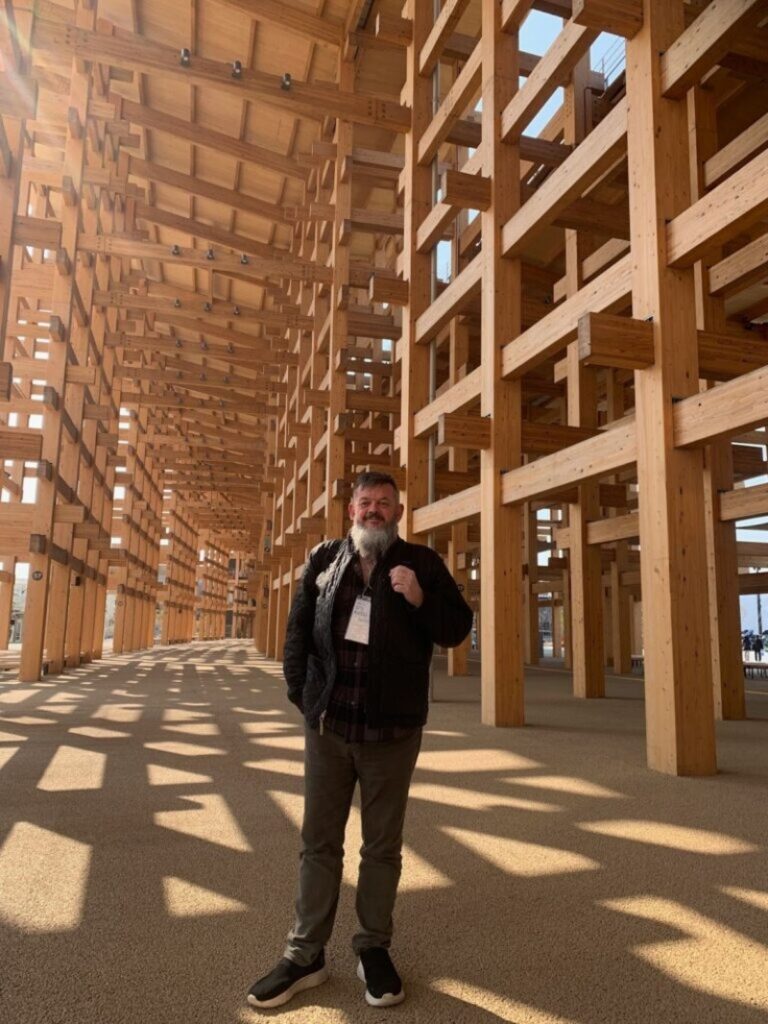
As we traversed the two-kilometer-long, 12-20-meter tall Grand Ring—the world’s largest wooden architectural structure (above), according to Guinness World Records—that circles the interior of the venue expected to draw some 28 million visitors, we caught revealing and encouraging glimpses of pavilions and infrastructure in various stages of construction.

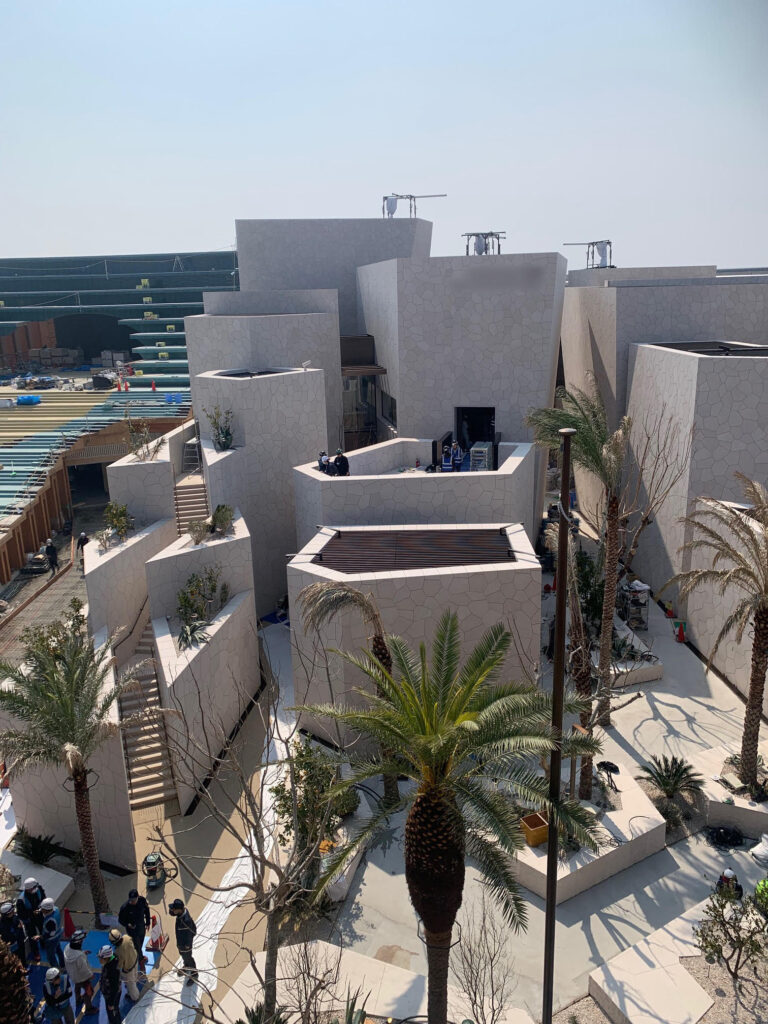

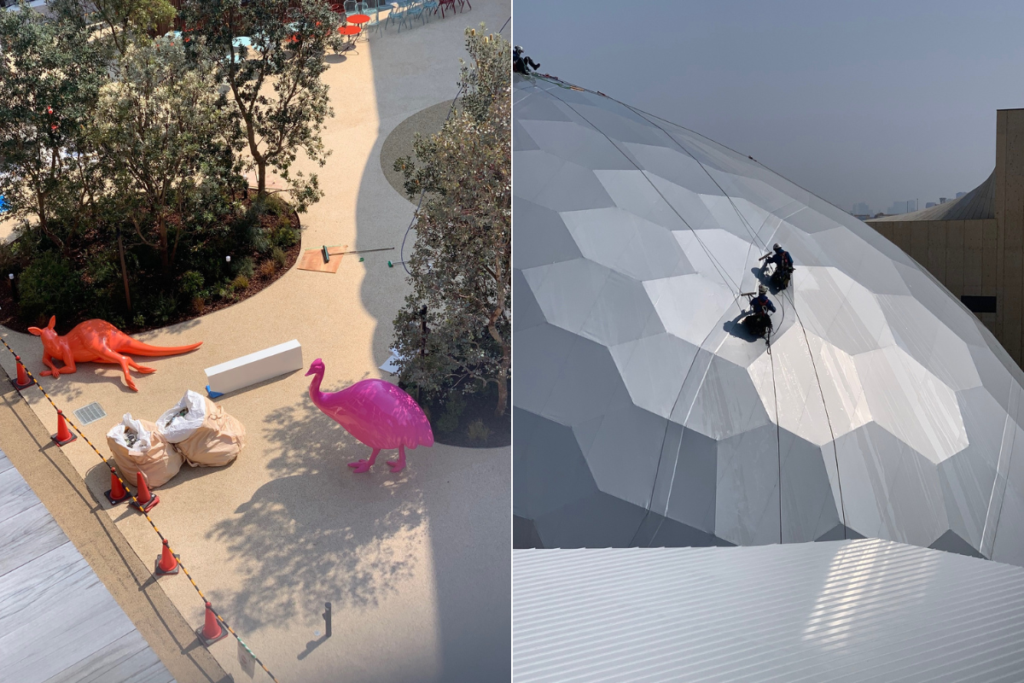
Some of the 158 participating nations in Osaka Expo—motto “Designing Future Society for Our Lives”—are shy about revealing their almost-ready creations before the April 13 opening, but I managed to snap a few images. We’ve hidden flags and text in the photos to preserve their modesty, but you can have some fun by trying to identify countries among the heavy machinery, fresh concrete and tight security. The Saudis, Chinese and Americans are rumoured to have spent lavishly on their pavilions, while some smaller nations opted to share sites to save costs.
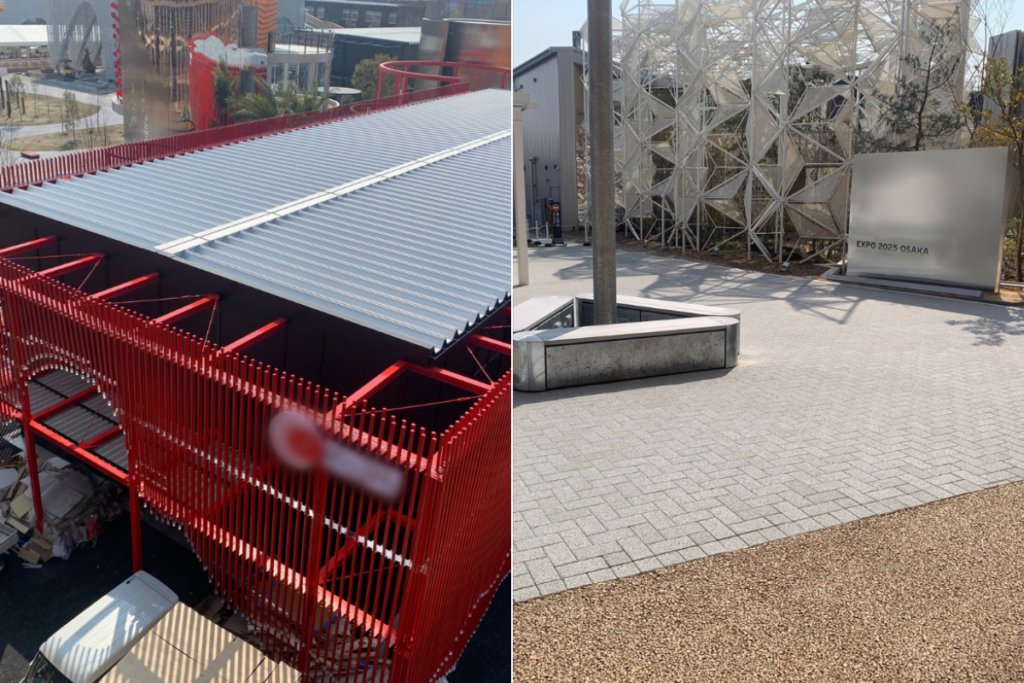
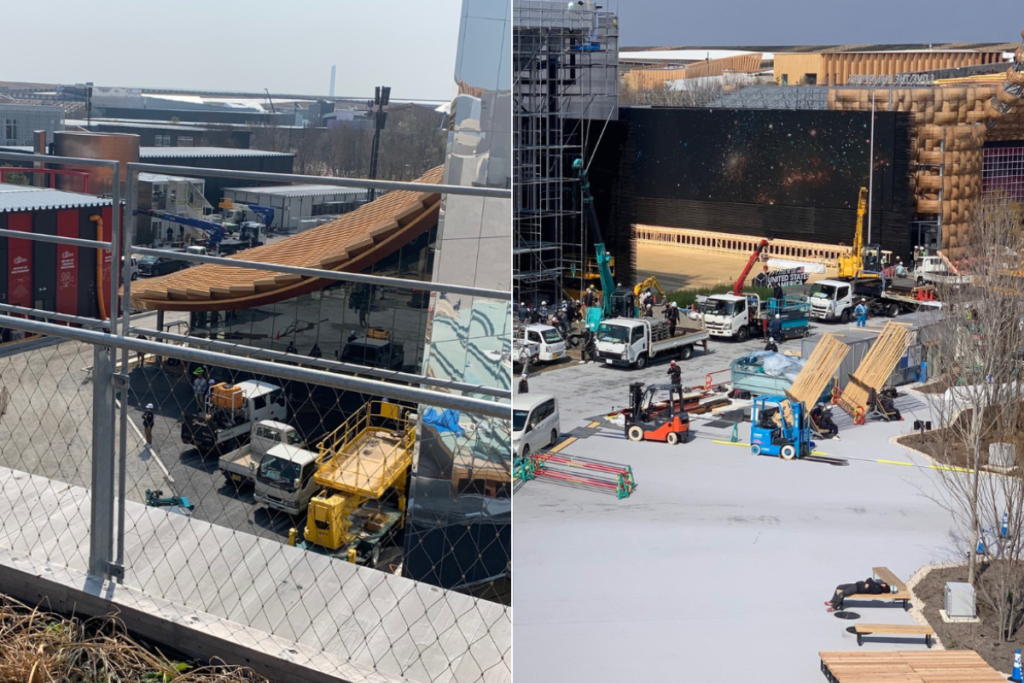
The Expo’s Global PR, Promotions and Communications Director-General Extraordinary Sachiko Yoshimura estimates you’ll need at least a week to visit all pavilions—including those of countries, global NPOs, corporates, public and private sectors and other organisations and themes such as the Women’s Pavilion—during the 184 days until it closes on October 13. “Most materials used to build the pavilions and Grand Ring will be recycled,” she said, adding that much of the technology and innovation to be showcased “will address global challenges such as sustainability, healthcare and urban development.”
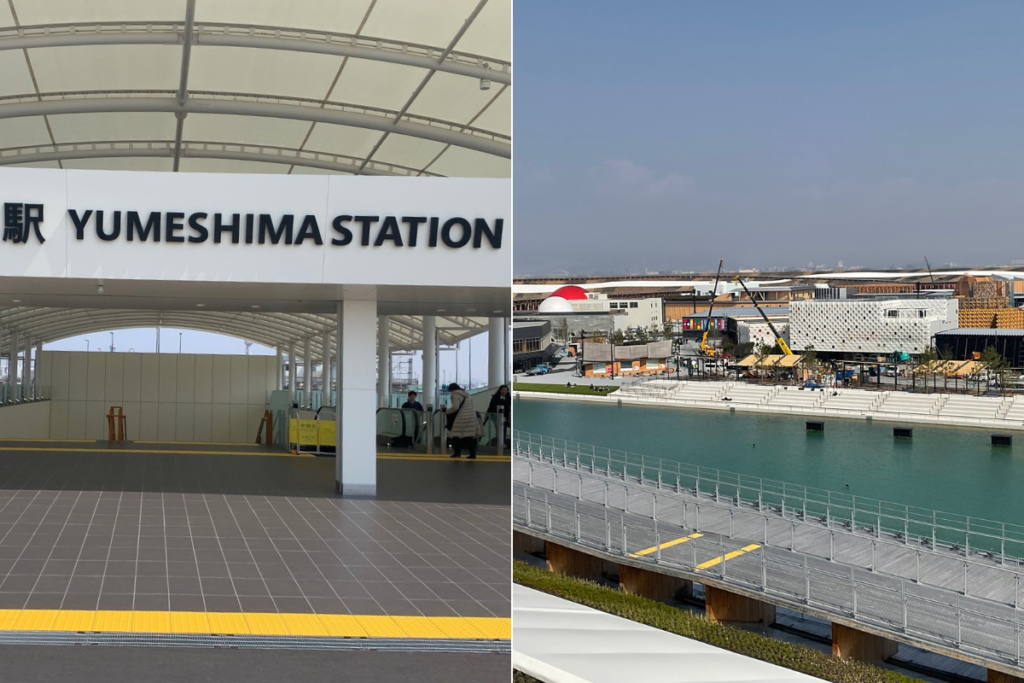
We entered via the nearby, newly purpose-built Yumeshima Station, but there was no sign yet of the unmanned EV buses and “flying cars” scheduled to operate in and near the venue’s eight zones named Connecting, Empowering and Saving Lives; Forest of Tranquility; Signature; Future Life; and West and East Gates.
And with just one 15-person prayer room said to be planned for all religions and around 3.5 million overseas visitors expected, a SE Asian I spoke to criticised the lack of space for Muslims and called for all pavilions to offer such facilities.

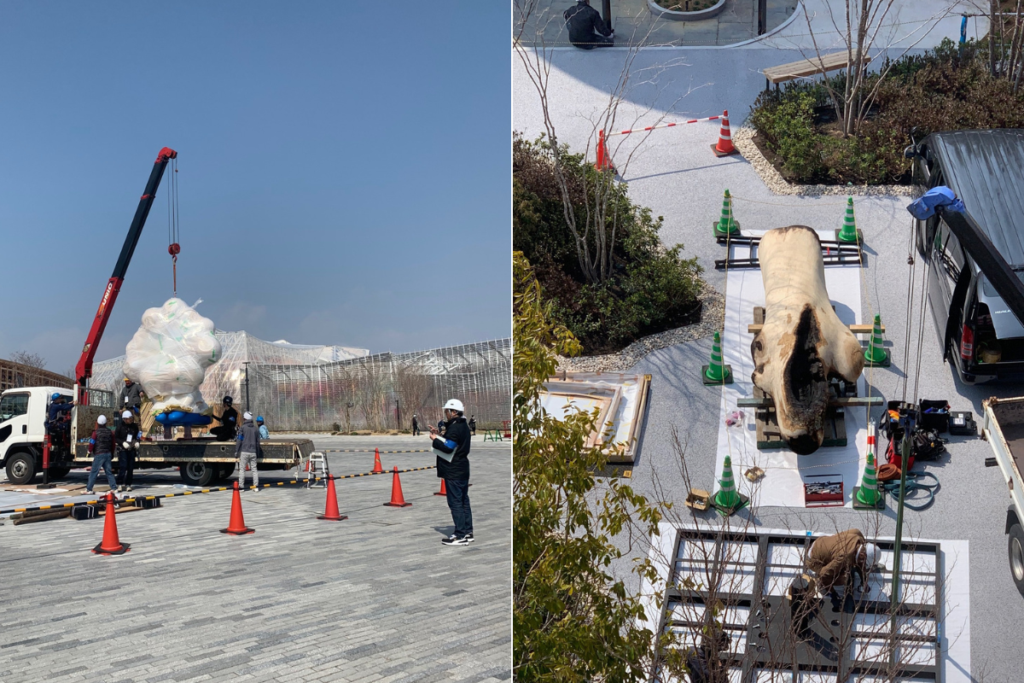
Where to stay
Accommodation concerns have been eased somewhat by the scheduled opening of the 39-story, 252-room Waldorf Astoria Osaka (below) that will debut in Japan about 12 kilometers away next to the city’s bustling train station on April 3, with a Presidential Suite rate of ¥1.2 million per night. “Our guest rooms combine classical art deco opulence with the serenity of traditional Japanese design,” Commercial Director Ewoud Roosjen told me during a tour of the property.
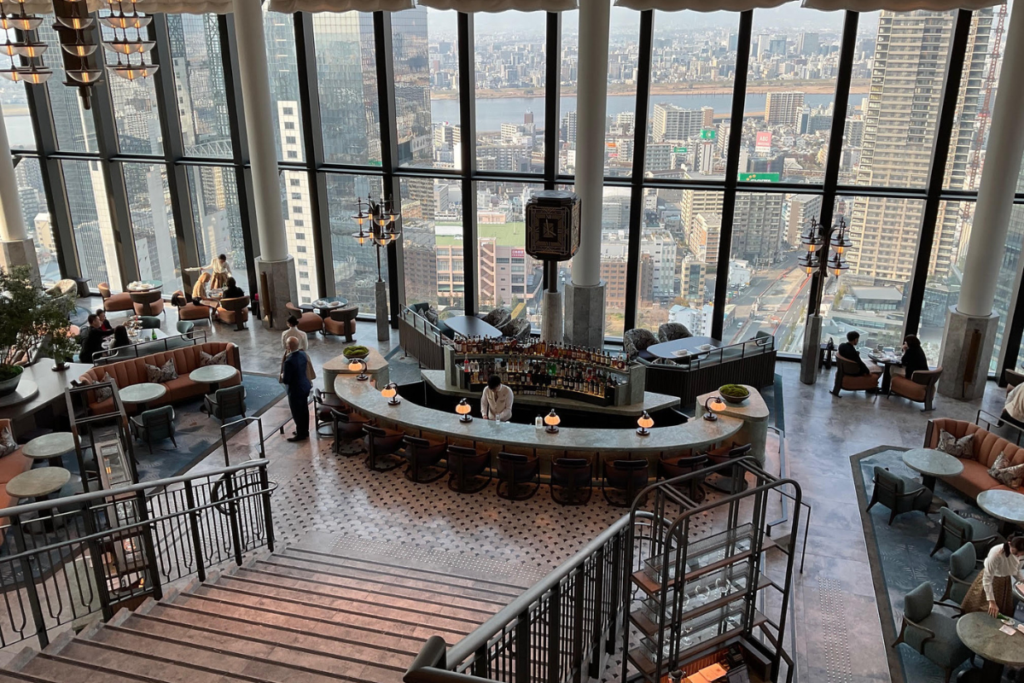
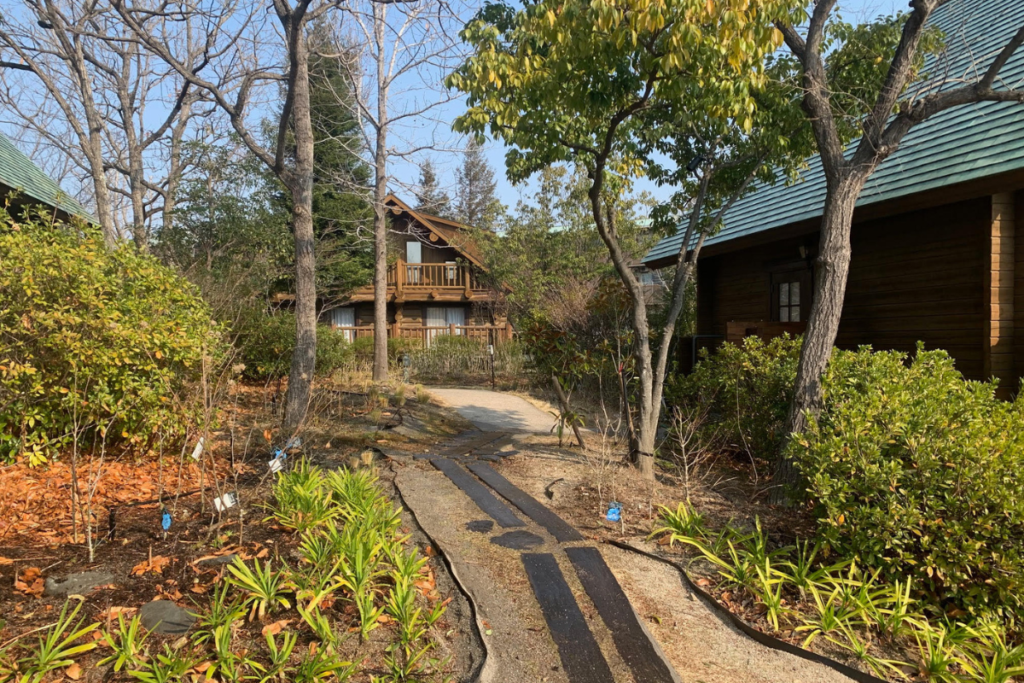
At the other end in price, environment, convenience and distance, the nearest accommodation to Osaka Expo is five minutes away on Maishima Island, adjacent to Yumeshima Island where the Expo venue is. The basic guest rooms start at just ¥10,000 per night while their Canadian-style log homes for six guests go for up to ¥1.5 million per month, both located on 39,000 square kilometres of pristine gardens dotted with barbecues and firepits at the tranquil Hotel Lodge Maishima (above). “The rejuvenating power of nature will make you forget that you are in Osaka from the moment you first step foot onto the island,” said General Manager Taku Hatsuoka.
